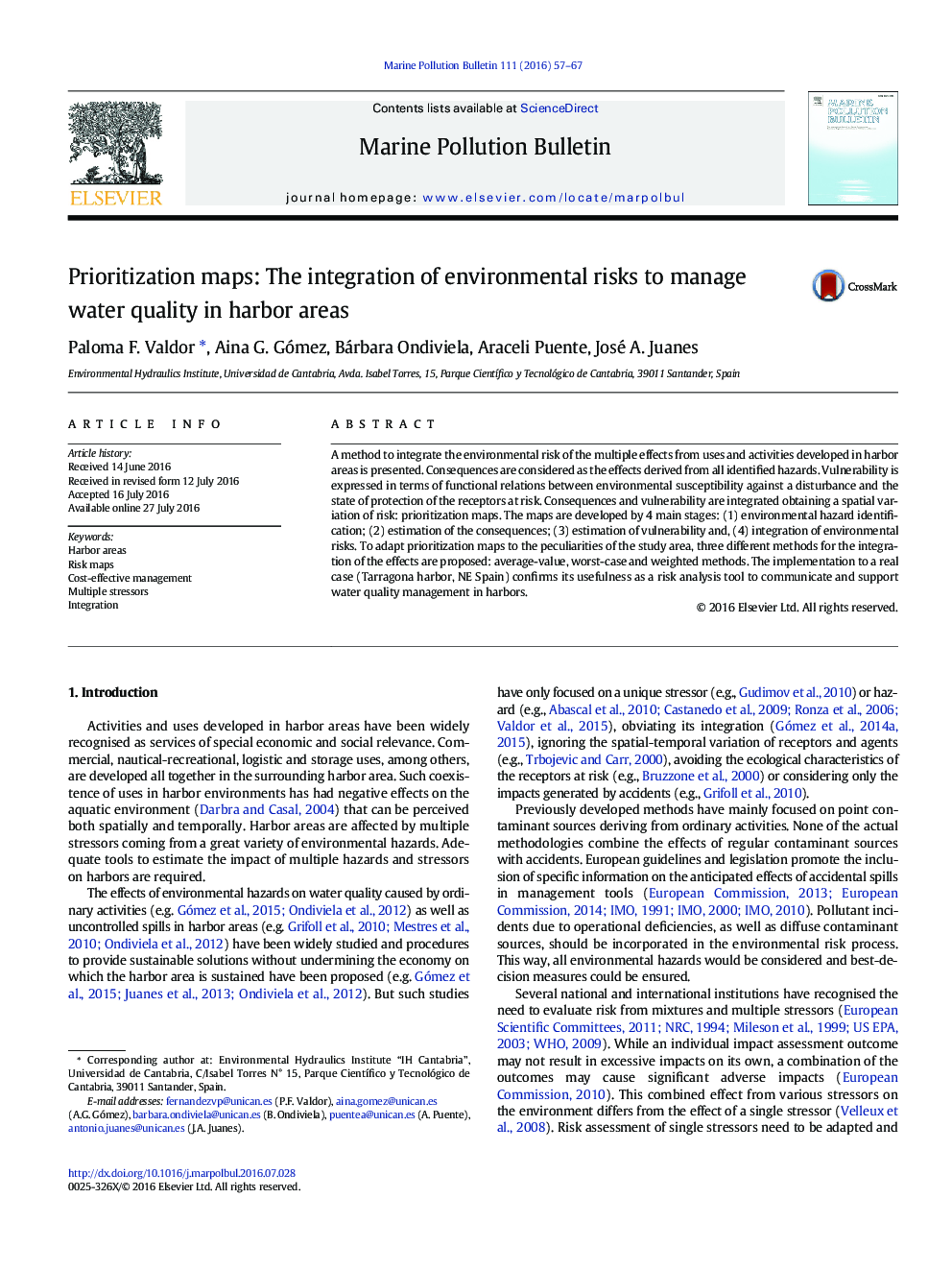| کد مقاله | کد نشریه | سال انتشار | مقاله انگلیسی | نسخه تمام متن |
|---|---|---|---|---|
| 4476292 | 1622724 | 2016 | 11 صفحه PDF | دانلود رایگان |
• Prioritization maps are useful tools to manage water quality in harbors.
• Point, diffuse sources and incidents are identified as environmental hazards.
• Predicted effects of multiple stressors from all identified hazards are integrated.
• The overall cumulative effect is combined with environmental vulnerability.
• Environmental risk assessment is correlated to environmental quality status.
A method to integrate the environmental risk of the multiple effects from uses and activities developed in harbor areas is presented. Consequences are considered as the effects derived from all identified hazards. Vulnerability is expressed in terms of functional relations between environmental susceptibility against a disturbance and the state of protection of the receptors at risk. Consequences and vulnerability are integrated obtaining a spatial variation of risk: prioritization maps. The maps are developed by 4 main stages: (1) environmental hazard identification; (2) estimation of the consequences; (3) estimation of vulnerability and, (4) integration of environmental risks. To adapt prioritization maps to the peculiarities of the study area, three different methods for the integration of the effects are proposed: average-value, worst-case and weighted methods. The implementation to a real case (Tarragona harbor, NE Spain) confirms its usefulness as a risk analysis tool to communicate and support water quality management in harbors.
The chart symbols are courtesy of the Integration and Application Network (ian.umces.edu/symbols).Figure optionsDownload as PowerPoint slide
Journal: Marine Pollution Bulletin - Volume 111, Issues 1–2, 15 October 2016, Pages 57–67
